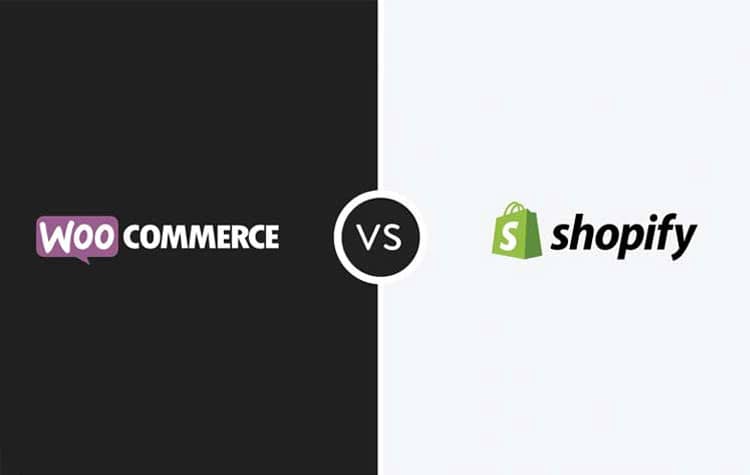WooCommerce vs Shopify: Ecommerce Store Comparison Cost

WooCommerce and Shopify are two eCommerce management systems for beginners. Both are great when it comes to store management. They have everything that an eCommerce store owner would want including a payment gateway, easy site management, and plugins for order management and logistics control.
In summary, WooCommerce and Shopify are great when it comes to eCommerce. But, for beginners, the biggest question is: Which one is better for store management? That’s what this article is all about. In this article, we will be comparing the cost of managing WooCommerce and Shopify so that you can see which one to choose to start your online business.
Let’s start.
Table of Contents
- Is WooCommerce Better than Shopify or Vice Versa?
- Design: WooCommerce vs Shopify
- Plugins: WooCommerce vs Shopify
- Templates: WooCommerce vs Shopify
- Ease of Use: WooCommerce vs Shopify
- Market: WooCommerce vs Shopify
- WooCommerce Total Cost Breakdown
- Shopify Total Cost Breakdown
- Which one to use: WooCommerce or Shopify eCommerce Platforms?
Is WooCommerce Better than Shopify or Vice Versa?
Most tech-savvy users will vouch for WooCommerce because it is a lot more customizable when it comes to store management. On the other hand, Shopify is not as flexible but it has its fair share of reasons to use it for eCommerce Store Design & Development. We have segmented this question into five parts so that you can easily understand whether WooCommerce has more advantages or Shopify.
Design: WooCommerce vs Shopify
When it comes to design, WooCommerce is a lot better. It is an open-source platform and it can be customized from A to Z. Almost everything on the WooCommerce platform can be customized by the users. They can even add more plugins to their websites or add built-in functionalities to the core.
On the other hand, Shopify can’t be customized at all. The design is rigid and you only have the option to edit the text, images, and add pre-designed themes.
Looking to build your eCommerce store in WordPress with WooCommerce Experts in Sydney? Get in Touch Today
Plugins: WooCommerce vs Shopify
WooCommerce offers thousands of plugins for store owners to easily set up and manage their stores. Most of these plugins are free and anyone can install them on the website within minutes. The best part? All of these plugins are open source and developers keep creating new WooCommerce plugins each day.
On the other hand, Shopify plugins are premium and you can only add them after purchase. Shopify plugins are limited to a few hundred because they are not open-sourced. Not every developer can create plugins for Shopify and earn from them.
Templates: WooCommerce vs Shopify
WooCommerce offers thousands of themes and templates by default. Users can easily install these themes on their websites and manage them. They can also add theme customizer plugins such as BeaverBuilder and Elementor. Use these plugins to customize templates as per user choice.
On the other hand, Shopify offers pre-designed templates. These can’t be customized at all. Since hard coding is not allowed on Shopify, users can’t add the functionality of their choice to the Shopify templates.
Ease of Use: WooCommerce vs Shopify
Last but not the least, WooCommerce is a free eCommerce platform that is built on WordPress CMS. It is available as a self-hosted platform and users can directly add WooCommerce to their hosting solutions with just a single click. It also offers payment gateways and numerous product management options.
On the other hand, Shopify is not free. It is a hosted eCommerce platform, which means that you have to pay more if your order volume or traffic volume increases. Shopify also offers a payment gateway but its product management options are limited.
Market: WooCommerce vs Shopify
WooCommerce is used by all WordPress users who have an eCommerce store. The world has 40% websites powered by WordPress, you can do the maths.
Shopify has around 18% eCommerce market share in comparison. It is also rising thanks to the US, UK, and Australia. In short, both WooCommerce and Shopify have a level-oriented understanding.
Now that you are aware of the features of both eCommerce platforms, it is time to compare their costs.
WooCommerce Total Cost Breakdown
WooCommerce is great when it comes to costs and expenses. Here is the monthly cost breakdown of the WooCommerce platform.
- Site hosting cost is around $5 to $10 per month
- The site management has no cost because store owners can easily manage it themself
- No cost for adding plugins to the website
- Theme cost is only one time. It is around $25 to $40 depending on user needs
- No other cost for WooCommerce store management.
- Additional costs for hiring WordPress experts may be required
Note: We have kept the cost to a bare minimum and not added any customisation cost or site marketing costs such as SEO or PPC in this cost breakdown.
Shopify Total Cost Breakdown
Here is the complete breakdown of the total cost of using Shopify on a monthly basis.
- Shopify costs $30 per month for beginners since it is a hosted eCommerce platform
- There is no cost for adding themes to Shopify because everything is included in the hosting and management cost of $30
- Shopify plugins are paid and therefore you will have to pay to use them. You don’t need a lot of plugins for managing Shopify though.
Note: Shopify cost will increase to $50 per month when the order volume of the store increases. It is because Shopify has different slabs for managing websites. If the user exceeds the storage and order volume slab, they are automatically added to the next slab without compromising on traffic quality. This can be heavier on the budget because the cost doubles almost instantly.
The total cost of WooCommerce annually would be $150 per year. This is a lot more cost-effective solution in comparison with Shopify. It is because the total yearly cost of Shopify can be somewhere between $500 and $800, so users who have their stores on WooCommerce are saving around $500 per year for basic-level hosting.
Which one to use: WooCommerce or Shopify eCommerce Platforms?
The results are in front of you. Building up a WooCommerce store has a negligible cost because the user only has one recurring cost and that is of hosting. Apart from that everything else can be taken care of by WooCommerce users without spending a dime.
So, if users have the knowledge to manage their eCommerce store and are not afraid to get their hands dirty with code from time to time… then they should opt for the WooCommerce platform. It is a lot faster, offers performance reports, and is simple to design. On the other hand, Shopify has a steeper learning curve, doesn’t offer flexibility in site management and operations, and is limited to a hosted eCommerce platform.
But it is also a good platform for those who don’t want to look at the eCommerce store activities actively. If they plan to hire a freelancer or a virtual assistant, then telling them about different tasks on Shopify and its management is almost a no-brainer.
The answer to Which Ecommerce Store is Better is, both have their pros and cons. So, when choosing one eCommerce platform make sure you do your due diligence.
